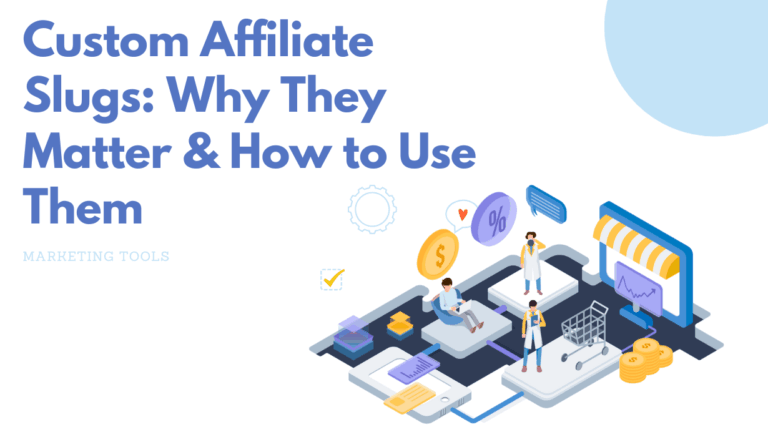Building a Profitable Multi-Level Affiliate Program (Pros, Cons, & Implementation)

Multi-level affiliate programs (also known as multi-tier or MLM affiliate systems) allow affiliates to earn not only from their direct referrals but also from the sales generated by their sub-affiliates.
When done right, this structure can help your business grow exponentially by rewarding collaboration and team-building within your affiliate network. However, when done wrong, it can become overly complex or even counterproductive.
In this guide, we’ll explore the benefits, drawbacks, and practical steps to build a multi-level affiliate program using Ultimate Affiliate Pro.
What Is a Multi-Level Affiliate Program?
A multi-level affiliate program rewards affiliates for more than just their direct referrals.
Here’s how it works:
- Level 1 (Direct Affiliate): earns a commission for direct referrals.
- Level 2 (Sub-affiliate): when the Level 1 affiliate recruits another affiliate, the original affiliate also earns a smaller percentage from Level 2’s sales.
- Level 3+ (optional): the structure can continue for several levels, though it’s usually capped for simplicity and compliance.
Example:
If John recruits Sarah (Level 2) and Sarah recruits Mike (Level 3), John may earn:
- 30% from his own referrals
- 10% from Sarah’s referrals
- 5% from Mike’s referrals
This “network effect” motivates affiliates to expand your program organically.
Advantages of Multi-Level Affiliate Marketing
- Stronger motivation to recruit new affiliates Affiliates are incentivized to bring new members because they also earn from their team’s success.
- Faster network growth Your affiliate base can grow exponentially instead of linearly — a single affiliate can bring dozens of sub-affiliates over time.
- Improved retention and loyalty Affiliates with downlines are less likely to quit, since they benefit passively from their team’s ongoing activity.
- Great for community-driven brands Perfect for membership sites, SaaS platforms, or educational products where word-of-mouth matters.
Disadvantages (and How to Manage Them)
- Complex commission structure Managing multiple levels of commissions can become tricky. 👉 Solution: Use automation tools like Ultimate Affiliate Pro’s MLM Module to define exact levels, rates, and hierarchies.
- Risk of MLM abuse (non-sales recruitment focus) Some systems drift toward “pyramid schemes” if rewards depend mainly on recruitment, not real sales. 👉 Solution: Always link commissions to real sales or leads, not just sign-ups.
- Performance tracking difficulty When you have multiple layers of affiliates, tracking earnings accurately is essential. 👉 Solution: Enable detailed referral reports in your affiliate dashboard and automate monthly summaries.
- Payout complexity More affiliates = more payouts. 👉 Solution: Use batch payments with PayPal or exportable CSVs via UAP’s Payout Tools.

How to Build a Multi-Level Affiliate Program in Ultimate Affiliate Pro
Before you begin, make sure you understand affiliate tracking fundamentals—how cookies, links, and conversions work—to verify multi-level attribution later.
Below is a step-by-step walkthrough to implement multi-level logic using UAP.
Step 1: Enable the Multi-Level Module
- Go to Ultimate Affiliate Pro → Settings → MLM Module.
- Activate Enable MLM System.
- Choose the number of levels (typically 2–5 for simplicity).
📘 Official documentation: MLM Workflow Example
Step 2: Define Commission Rates for Each Level
- For each level, assign a percentage or flat amount. Example:
- Level 1: 30%
- Level 2: 10%
- Level 3: 5%
- You can also apply different rules for specific products or affiliates via conditional logic (UAP’s Dynamic Commission Rules).
💡 Tip: Avoid going beyond 3 levels — most successful programs keep it simple to ensure clarity and transparency.
Step 3: Connect Affiliates Hierarchically
- When a new affiliate signs up using another affiliate’s referral link, UAP automatically assigns that new user under the original affiliate as their “parent.”
- This hierarchy creates the chain needed for multi-level commissions.
👥 You can view this structure under:
Dashboard → Affiliates → MLM Tree View
Step 4: Test Tracking and Payouts
Before going live:
- Register a few test affiliates.
- Make dummy transactions to verify that commissions propagate correctly through multiple levels.
- Review reports in: Referrals → Levels Summary and Commissions Breakdown.
Related Resources
Step 5: Communicate the MLM Rules Clearly
Transparency is critical for compliance and trust.
Create a dedicated page (e.g., /affiliate-levels/) explaining:
- How levels work
- What the commission rates are
- Maximum number of levels
- Example calculations
📄 Example snippet you can use:
“Each affiliate earns 30% on direct sales (Level 1), 10% on referrals generated by their direct affiliates (Level 2), and 5% on the next level (Level 3). Commissions are only awarded on valid, completed sales.”
Best Practices for Multi-Level Affiliate Programs
✅ Keep levels limited — 2–3 is usually optimal.
✅ Pay only on completed sales, not sign-ups.
✅ Provide team leaderboards — it increases engagement.
✅ Set minimum payout thresholds to reduce admin overhead.
✅ Audit regularly to detect abuse or inactive sub-affiliates.
Related Resources
- Ultimate Affiliate Pro – Official Features
- How to Automatically Create Affiliate Accounts in WooCommerce
- Paying Your Affiliates Automatically (PayPal & Bank Transfers)
- UAP Documentation – MLM Workflow Example
Conclusion
A multi-level affiliate program can be a game-changer — turning individual promoters into network builders.
By combining smart commission logic, clear rules, and automated tracking, you can motivate affiliates to scale your program organically.
With Ultimate Affiliate Pro, setting up such a system is not only possible but easy — no custom code, no manual hierarchy management, just powerful automation built directly into WordPress.
Ready to create your own multi-level affiliate system?
👉 Start your affiliate network today with Ultimate Affiliate Pro

